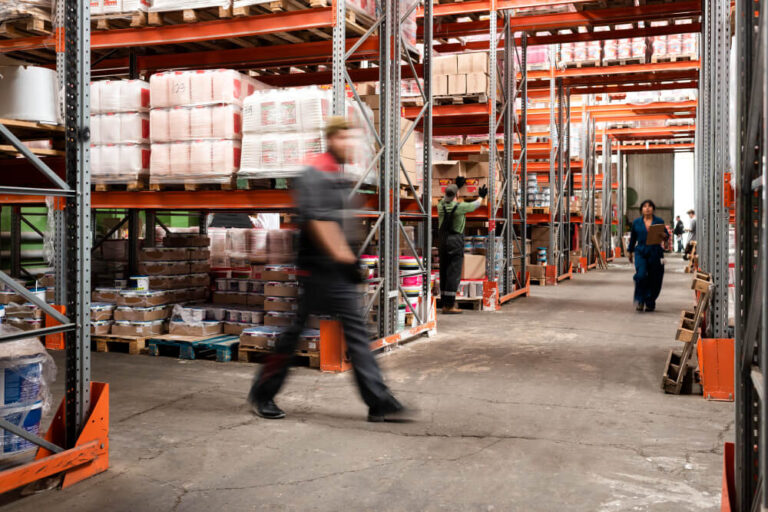Choosing the best ecommerce warehouse is important for running a successful online business. You need to find a warehouse that fits your product type, order volume, and customer location. A warehouse that meets these needs can streamline operations and improve delivery times.
Start by considering what your business specifically requires. If you’re managing a high volume of orders, look for a warehouse capable of handling large inventories efficiently. Some warehouses also offer extra services like packaging and quality control, which could be beneficial for saving time and costs.
An ecommerce fulfillment center can help improve your business by offering inventory management and shipping solutions. These services are designed to make your ecommerce operations more efficient and effective, keeping your customers satisfied with timely deliveries.
Evaluating Your Ecommerce Business Needs
Choosing the right warehouse involves understanding what will most benefit your business operations. Evaluating storage needs, order volume, and product traits is key to making an informed decision.
Determining Storage Requirements
The first step is figuring out how much storage space you need. This depends on the number of products you deal with and how much space they take up. Make a list of your items and see how big each is to get a rough idea.
Consider whether your needs might change. Consider special storage needs like temperature control if you sell products like food or cosmetics. Storage layout can also affect how quickly you can get items ready for shipping.
Understanding Order Volume and Scalability
Order volume affects warehouse choices. High-volume businesses need large spaces to handle stock efficiently. For lower volumes, smaller locations might work well.
Scalability is important. If your business is growing, think long-term. A warehouse should be able to handle more volume in the future if needed. Look into flexible contracts that allow for expansion.
Automated systems can help manage order spikes. These technologies streamline processes and improve accuracy.
Assessing Product Characteristics
Look at the special features of your products. Size, weight, and how you store and handle products can influence your choice of warehouse.
If your items require special conditions like climate control or secure storage, those factors are important to consider. Products that need cooling, for instance, will require specific setups. Fragile items need systems to prevent damage.
Understand what you sell to select a warehouse that can accommodate these needs effectively. This will guarantee smoother operations and better service for your customers. Use product characteristics to find a warehouse that meets those demands efficiently.
Selecting the Ideal Warehouse
Choosing the right warehouse for your e-commerce business is key to meeting your specific operational goals. Consider factors like location, cost, technology, and logistics to align with your business needs efficiently.
Location and Proximity to Customers
The location of your warehouse can greatly impact delivery times and costs. A warehouse near your key customer base or major distribution hubs can reduce shipping time and improve customer satisfaction. It can also lower costs as goods travel shorter distances.
Evaluate your current customer geography and choose a location that balances cost and accessibility. You want your products to get to your customers quickly and at a lower cost.
Warehousing Costs and Budget Considerations
Budget plays a significant role when selecting a warehouse. Analyze your storage requirements relative to the costs involved. Consider multiple costs such as rent, utilities, and any additional fees. Some warehouses charge extra for amenities like temperature control or security.
Weigh these costs against your budget to find the most financially sensible option. Create a cost comparison spreadsheet to see what works best for you visually.
Technology Integration and Inventory Management
Technology is a key factor in modern warehousing. Look for warehouses equipped with advanced inventory management systems. Features like real-time tracking and automated reorder notifications help streamline operations.
They can significantly reduce errors compared to manual methods. Technology enables you to manage stock levels more efficiently and improve the fulfillment process. Ask about the specific systems in use and evaluate their compatibility with your business tools.
Shipping Logistics and Carrier Accessibility
Efficient shipping logistics are necessary for operations. A warehouse connected to major shipping routes can simplify carrier accessibility. Consider proximity to highways, railways, and airports to speed up shipping.
Evaluate relationships with carriers for volume discounts or priority service. Transportation options should align with the needs of your delivery model, whether you prioritize speed, cost, or balance.
Conclusion
Choosing the right ecommerce warehouse requires understanding your business’s specific needs. Start by assessing factors like order volume, storage space, and shipping requirements. This will guide your decision-making process.
Consider different warehouse types and their capabilities. Some offer unique services such as packaging and quality checks, which might save time and resources.
Always think about the future. Evaluate how the warehouse can support your business growth over time. Scalability is an important factor in making your choice. This will help your business run smoothly as it expands.


